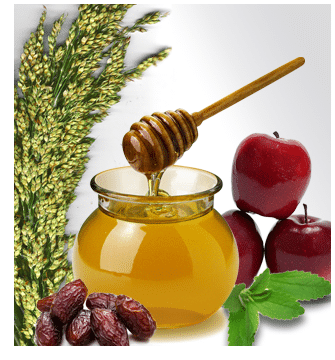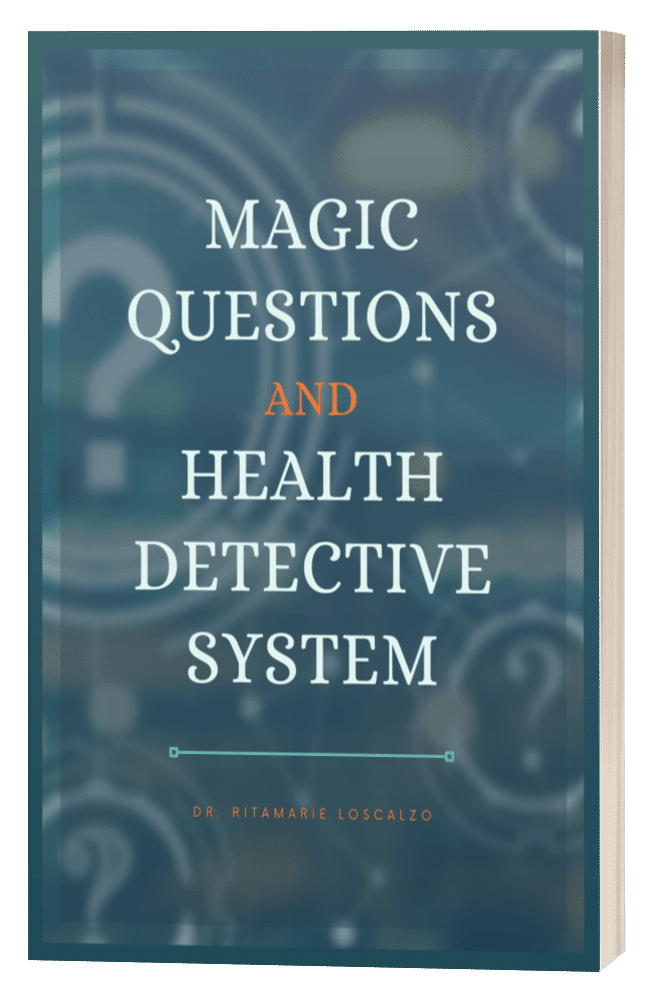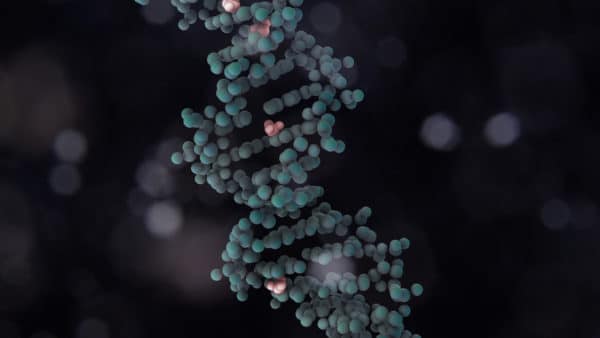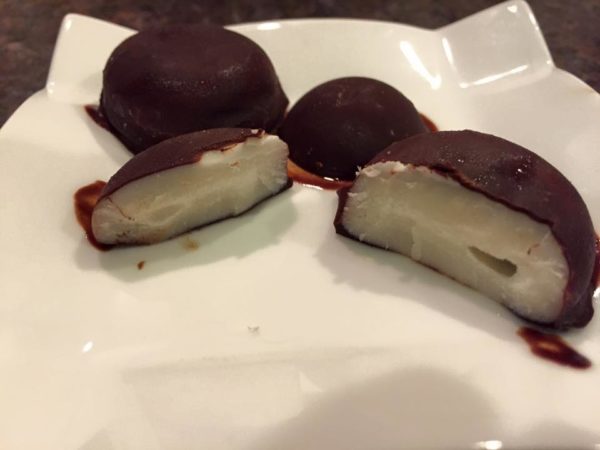
I am reprinting 2 articles in their entirety, one, in this post, an anti-agave article from Wise Traditions in Food, Farming and the Healing Arts, the quarterly magazine of the Weston A. Price Foundation, Spring 2009, and the other in a subsequent post. in defense of agave from a blog called Altered Plates.
While I have not done exhaustive research to dispute or prove the claims in these articles, I thought these articles needed to be shared, so you can make your own decision about this controversial topic. If you have any further information on the issue to share, please post it below.
High fructose corn syrup (HFCS) entered the market place in the early 1970’s and within twenty years, accounted for over half the refined sweeteners used in the U.S. food supply. Produced mainly by the two food processing giants, Archer Daniels Midland and Cargill, it is the main sweetener in soft drinks and is increasingly replacing sugar in baked goods, bread, cereals, canned fruits, jams and jellies, dairy desserts and flavored yogurts. Sweeter and less expensive than sugar, HFCS represents the major change in the American diet over the last forty years. Although the food industry made this change very quietly, consumers are beginning to ask a lot of loud questions about the new sweetener as research accumulates to indicate that it is much worse for us than we thought.
Although the corn industry claims that HFCS received GRAS (Generally Recognized as Safe) status when it filed for it in 1983, the FDA did not grant GRAS status until 1996 after considerable pressure from the industry, which was becoming nervous with the publication of negative research findings described in the first anti-HFCS articles.1
Growing consumer resistance to HFCS is the likely explanation for a recent industry campaign to put the new sweetener in a favorable light. Ads run on television and in popular magazines portray HFCS as benign and its critics as bossy, overbearing, unqualified and misinformed.
For example, a full-page ad in Better Homes and Gardens portrays two attractive women engaged in the following conversation: “My dry cleaner says high fructose corn syrup is loaded with calories.”
The reply: “A registered dietitian presses your shirts?”
Then comes the official statement: “There’s a lot of misinformation out there about sugars made from corn. Truth is, high fructose corn syrup is nutritionally the same as table sugar. The same number of calories too. As registered dietitians recommend, keep enjoying the foods you love, just do it in moderation. We welcome a healthy discussion. Get the facts. You’re in for a sweet surprise. www.SweetSurprise.com. 2
On the surface, the official statement is true. Both HFCS and sugar have approximately the same number of calories, both are pure carbohydrate and both are virtually devoid of vitamins and minerals. For this reason alone, HFCS should be strictly avoided. Since refined carbohydrates, sugar and HFCS included, tend to be addictive, it is difficult to follow the platitudinous advice of registered dietitians who urge us to consume them in moderation. In fact, the entire food industry has succeeded very well over the past thirty years in getting Americans to consume far more than moderate amounts of refined sweeteners, particularly high fructose corn syrup. Between 1970 and 2000, the per capita consumption of HFCS in the U.S. increased from less than one pound per person to over sixty pounds yearly.3
There can be no debate about the fact that both sugar and HFCS, with their empty, depleting, addictive calories, are bad for you. But the real question is whether HFCS is actually worse for you-more depleting and more damaging- than ordinary sugar. The research indicates that it is.
The Obesity Debate
The public became aware of the possible downside of HFCS with the publication of a 2004 paper in the American Journal of Clinical Nutrition.4 Authors Bray and others noted the parallel increase in obesity and HFCS consumption in the U.S., and a number of columnists publicized his theory that, calorie for calorie, HFCS is more likely to cause weight gain than sugar.
The Bray paper provides an explanation for the mechanism whereby fructose would be more fattening. Sugar is a disaccharide that breaks down into two monosaccharides-glucose and fructose-in the intestinal tract. After absorption, fructose must pass through the liver. Small amounts of fructose added to glucose in the diet increase the production of glycogen (stored sugar) and reduce the release of glucose into the bloodstream, an outcome that is theoretically helpful to those suffering from type 2 diabetes.
However, large amounts of fructose in the diet rapidly turn into fatty acids-a process called “de novo lipogenesis”-which are then stored as fat or released into the bloodstream as triglycerides.
Small amounts of L-fructose-the type of fructose that human beings have traditionally consumed in fruit-can actually be beneficial to diabetics because L-fructose does not stimulate insulin secretion. However, research
indicates that insulin concentrations in the central nervous system have a direct inhibitory effect on food intake-when insulin secretions increase, food consumption declines. Furthermore, insulin increases release of leptin, a hormone that also inhibits food intake. Individuals who are genetically unable to produce leptin are massively obese; low leptin concentrations are associated with increased hunger and gains in body fat.
Thus, to the extent that fructose inhibits insulin and leptin levels, one would expect an increase in food intake in a diet that includes HFCS. Bray cites a 2002 study by Teff and others, published in Diabetes, in which consumption of high-fructose meals reduced 24-hour plasma insulin and leptin concentrations and increased triglyceride levels in women.5 (Although published in a major medical journal, this study does not appear in a Medline search.)
According to Bray: “Because insulin and leptin act as key afferent signals in the regulation of food intake and body weight, this suggests that dietary fructose may contribute to increased energy intake and weight gain.”6
There is another difference between fructose and glucose metabolism. Glucose enters the cells through the action of insulin; fructose enters the cells through the action of something called a Glut-5 transporter, which does not depend on insulin. This transporter is absent from pancreatic B-cells and the brain, which indicates limited entry of fructose into these tissues. Glucose provides “satiety” signals to the brain that fructose cannot provide because it is not transported into the brain.
Once inside the cells, fructose facilitates the formation of triglycerides more efficiently than does glucose. Bray references a study by Bantle and others in which a diet containing 17 percent fructose (very typical of
today’s consumer), caused a highly significant increase of 32 percent triglyceride levels in the blood in male subjects, although not in female subjects.7
Bray also discusses the fact that sweetened beverages in general, as compared to sweeteners added to solid foods, have a greater tendency to cause weight gain, citing a randomized, double-blind European study by Rabin and others, which found that drinking calorically sweetened beverages resulted in greater weight gain over the ten-week study than did drinking diet drinks.8 Since the beverages in this study were sweetened with sucrose, Bray called for a second randomized controlled study to compare sucrose- and
HFCS-sweetened beverages.
Industry Response
But instead of support for such a study, the industry has responded with a wallop of damage control in the form of a report by the Center for Food, Nutrition and Agriculture Policy.9 The study was supported by a gift from British sweetener company, Tate & Lyle, Inc.
The magnitude of the deleterious effects of fructose varies depending on such factors as age, sex, baseline glucose, insulin, triglyceride concentrations, the presence of insulin resistance, and the amount of
dietary fructose consumed.10 Some people are more sensitive to fructose than others. They include hypertensive, hyperinsulinemic, hypertriglyceridemic, non-insulin dependent diabetic people, people with functional bowel disease and postmenopausal women.11 The expert panel was able to confuse the issue
by citing studies carried out with individuals known to be less sensitive to fructose. Conspicuously absent in their review were the Teff, Bantle and Rabin studies cited by Bray.
The report dismisses both the epidemiological correlation and the large amount of research showing that HFCS is metabolized differently from sucrose. It also dismisses the fact that U.S. fructose consumption has
increased over 30 percent since 1970, claiming instead that the fructose: glucose ratio (F:G) in the U.S. food supply has not appreciably changed since the introduction of HFCS in the 1960s-an amazing claim given the fact that the HFCS in sodas has a F:G ratio of 55:45, and the HFCS used in diet
foods has a F:G ratio of 90:10.
While admitting that “studies analyzing the differences between HFCS and sucrose consumption and their contributions to weight gain do not exist,” the authors do not join Bray in calling for such a study. Instead, they conclude that HFCS “does not appear to contribute to overweight and obesity any differently than do other energy sources.”
The Big Dirty Secret About HFCS
Many researchers have pointed out that the fructose in HFCS is free, unbound fructose, which is not the same as the fructose in fruit, which is bound to other sugars, and is part of a complex that includes fiber, fatty acids, vitamins and minerals.
Leaving this obvious difference aside, the industry would have the public believe that the fructose in fruit and in HFCS are chemically identical. However, most of the fructose in fruit is in the form of L-fructose or
levulose; the fructose in HFCS is a different isomer, D-fructose. Small amounts of D-fructose do occur in fruit, but the D-fructose in HFCS has the reversed isomerization and polarity of a refined fructose molecule.12 As explained by Russ Bianchi, Managing Director and CEO of Adept Solutions, Inc., a globally recognized food and beverage development company, the fructose in HFCS is therefore not recognized in the human Krebs cycle for primary conversion to blood glucose in any significant quantity, and therefore cannot be used for energy utilization.13 Instead, these refined fructose sweeteners are primarily converted into triglycerides and adipose tissue (body fat). In fact, a new study, published in the Journal of Clinical Endocrinology and Metabolism, found that obese people who drank a fructose-sweetened beverage with a meal had triglyceride levels almost 200 percent higher than obese people who drank a glucose-sweetened beverage with a meal.14
Chronic high triglycerides translate into increased insulin resistance, inflammation and heart disease. Thus, according to Bianchi, HFCS is a recipe for obesity, lack of energy and metabolic syndrome-the very portrait of the modern American addicted to a diet of HFCS-sweetened sodas.
Agave “Nectar” to the Rescue
As the educated public has shied away from foods containing HFCS, the industry has brought a new sweetener on the scene, one used especially in foods aimed at the health-conscious consumer: agave “nectar.” Agave nectar is advertised as a “diabetic friendly,” raw, and “100% natural sweetener.”
Yet it is none of these.
Agave nectar is found on the shelves of health food stores primarily under the labels, “Agave Nectar 100% Natural Sweetener,” and “Organic Raw Blue Agave Nectar.” In addition, it can be found in foods labeled as organic or raw, including ketchup, ice cream, chocolate, and health food bars.
Agave bulb
The starchy agave root bulb.
The implication of its name, along with the pictures and descriptions on the product labels, creates the impression that agave is an unrefined sweetener that has been used for thousands of years by native people in central Mexico. “For thousands of years natives to central Mexico used different species of agave plants for medicine, as well as for building shelter.” Thus reads the copy on an agave package. And it is true that natives would also allow the sweet sap or liquid of one species of agave to ferment naturally, which created a mildly alcoholic beverage with a very pungent flavor known as pulque. They also made a traditional sweetener from the agave sap or juice called miel de agave by simply boiling it for several hours. But, as one agave seller explains, the agave nectar purchased in stores is neither of these traditional foods: “Agave nectar is a newly created sweetener, having been developed during the 1990’s.”33
The Big Dirty Secret About Agave
In spite of manufacturers’ claims, agave “nectar” is not made from the sap of the yucca or agave plant but from the starch of the giant pineapple-like, root bulb. The principal constituent of the agave root is starch, similar to the starch in corn or rice, and a complex carbohydrate called inulin, which is made up of chains of fructose molecules.Technically a highly indigestible fiber, inulin, which does not taste sweet, comprises about half of the carbohydrate content of agave.34
The process by which agave glucose and inulin are converted into “nectar” is similar to the process by which corn starch is converted into HFCS.35 The agave starch is subject to an enzymatic and chemical process that converts the starch into a fructose-rich syrup-anywhere from 70 percent fructose and higher according to the agave nectar chemical profiles posted on agave nectar websites. 36 (One agave manufacturer claims that his product is made with “natural” enzymes.) That’s right, the refined fructose in agave nectar is much more concentrated than the fructose in HFCS. For comparison, the high fructose corn syrup used in sodas is 55 percent refined fructose. (A natural agave product does exist in Mexico, a molasses type of syrup from concentrated plant nectar, but availability is limited and it is expensive to produce.)
According to Bianchi, agave “nectar” and HFCS “are indeed made the same way, using a highly chemical process with genetically modified enzymes. They are also using caustic acids, clarifiers, filtration chemicals and so forth in the conversion of agave starches.” The result is a high level of highly refined fructose in the remaining syrup, along with some remaining inulin.
In a confidential FDA letter, Dr. Martin Stutsman of the Food and Drug Administration’s Office of Labeling Enforcement, explains the FDA’s food labeling laws related to agave nectar: “Corn syrup treated with enzymes to enhance the fructose levels is to be labeled ‘High Fructose Corn Syrup.'” According to Mr. Stutsman, agave requires the label “hydrolyzed inulin syrup.”37 Even though, like corn, agave is a starch and fiber food processed with enzymes, it does not require the label “High Fructose Agave Syrup.” Agave “nectar” is a misnomer; at the very least, it should be labeled “agave syrup.”
Agave syrup comes in two colors: clear or light, and amber. What is this difference? Mr. Bianchi explains: “Due to poor quality control in the agave processing plants in Mexico, sometimes the fructose gets burned after being heated above 140 degrees Fahrenheit, thus creating a darker, or amber color.” However, the labels create the impression of an artisan product-like light or amber beer. As consumers are learning about problems with agave syrup, the label “chicory syrup” is beginning to appear as a non-conforming
word for the product. Consumer beware!
The Saponin Problem
Yucca species are known to contain large quantities of saponins. The industry describes saponins in agave syrup as beneficial: “Agave’s rich density of saponins increases hydration as the soapy, surfactant nature of
saponins change the wetting angle of water it contacts. This eases and accelerates cellular water uptake, especially when used with a high-quality salt.”38
However, the truth is that the saponins found in many varieties of agave plants are toxic steroid derivatives, capable of disrupting red blood cells and producing diarrhea and vomiting,39 to be avoided during pregnancy or breastfeeding because they might cause or contribute to miscarriage by stimulating blood flow to the uterus.40 At the very least, agave products should carry a warning label indicating that the product may cause a miscarriage.
Just Say No to Agave
Since the FDA makes no effort to enforce food-labeling laws, consumers cannot be certain that what they are eating is what the label says it is. New sweeteners like agave syrup were introduced into the market to make a profit, not to make consumers healthy. Clever marketing has led mane consumers to believe that the high level of fructose in agave syrup makes it a safe and a natural sweetener. Agave syrup labels do not conform to FDA labeling requirements, thus deepening the false illusion of an unprocessed product. As we have demonstrated here, if a sweetener contains manufactured fructose, it is neither safe, nor natural, especially at levels up to 70 percent.
Agave syrup is a manmade sweetener which has been through a complicated chemical refining process of enzymatic digestion that converts the starch and fiber into the unbound, manmade chemical fructose. While high fructose agave syrup won’t spike your blood glucose levels, the fructose in it may cause mineral depletion, liver inflammation, hardening of the arteries, insulin resistance leading to diabetes, high blood pressure, cardiovascular disease and obesity.
If you want something sweet, eat a piece of fruit, not a candy bar labeled as a “health food.” If you want to create something sweet, use sweeteners that are known to be safer. For uncooked dishes, unheated raw honey or dates work well. For cooked dishes or sweet drinks, a good organic maple syrup, or even freshly juiced apple juice or orange juice can provide delicious and relatively safe sweetness; dehydrated cane sugar juice or maple sugar may be used in moderation in cookies and desserts that contain nutritious ingredients and good fats such as butter, egg yolks and nuts.
However, to be healthy, we cannot eat sugar all day, no matter how natural the form. One should limit total sweetener consumption to less than five percent of daily calories. For a diet of 2500 calories per day, that’s less than three tablespoons of honey, maple syrup or dehydrated cane sugar juice, or several pieces of fruit. And many people do best by avoiding sweeteners completely.
The lack of standards in the health food world comes as depressing news; but let this news encourage you to consume more pure and unrefined foods and sweetener sources. Good health depends on wise food choices, and wise food choices depend on constant vigilance.
_____
SIDEBARS
How Corn Sweeteners Are Made
Called “one of the greatest achievements in the sugar industry,” the development of the various types of corn syrups, maltodextrins and high-fructose corn syrup from corn starch sources, represents the pinnacle
of food processing. Corn starch can be hydrolyzed into glucose relatively easily, but it was not until the 1970s that it became a major commercial product, bringing about major changes in the food industry.
Corn starch is processed and refined from the kernels of corn by using a series of steeping (swelling the kernel), separation and grinding processes to separate the starch from the other parts of the kernel (which are used for animal feed.) The starch is hydrolyzed using acid, acid-enzyme, or enzyme-enzyme catalyzed processes. The first enzyme is generally a thermally stable alpha amylase which produces about 10-20 percent glucose. Further treatment with the enzyme glucoamylase yields 93-96 percent glucose. The final corn syrup (glucose syrup) products include dried corn syrup, maltodextrin and dextrose (glucose).
With the development of glucoamylase in the 1940s and 1950s, it became a straightforward matter to produce highpercent glucose syrups (corn syrup). However, these have shortcomings in the sweetener industry. D-glucose has only about 70 percent of the sweetness of sucrose, on a weight basis, and is comparatively insoluble. Fructose is 30 percent sweeter than sucrose, on a weight basis, and twice as soluble as glucose at low temperatures, so a 50 percent conversion of glucose to fructose overcomes both problems, giving a stable syrup that is as sweet as a sucrose solution of the same concentration.
According to food industry literature, one of the “triumphs” of enzyme technology so far has been the development of glucose isomerase, which in turn led to the commercialization of high fructose corn syrups. Several types of bacteria can produce such glucose isomerases. The enzymes are resistant to thermal denaturation and will act at very high substrate concentrations, which means that they are stable at higher operational temperatures and can be used over and over during processing. This is key to the production of an inexpensive substitute for sugar.
Glucose isomerases convert the glucose in corn syrup into fructose, resulting in high fructose corn syrup (HFCS). HFCS comes in three different formulations. Forty-two percent fructose corn syrup is used mostly in processed foods like pastries, cookies and ketchup. However, soft drink manufacturers requested a high-fructose blend, one containing 55 percent fructose. This is produced by using vast chromatographic columns of zeolites or the calcium salts of cation exchange resins to absorb and separate the fructose from the other components. A very sweet 90 percent high fructose corn syrup is used as a sweetener in low-calorie “diet” products.
Source: en.wikipedia.org/wiki/High_fructose_corn_syrup
A Return to Sugar?
A recent Wall Street Journal article (January 11, 2006) reports that many outfits are importing Coca-Cola from Mexico into the U.S., not because Mexican Coke is cheaper (it’s actually more expensive), but because in Mexico it is made with sugar, which many consumers prefer. By one estimate, such imports have eroded up to 25 percent of total U.S. sales. Pepsi and Coke are testing demand with Kosher-for-Passover versions of the soft drinks containing sugar rather than HFCS. (Corn is one of the grains forbidden in Passover.) According to one report, Pepsi and Mountain Dew will test consumer preferences with sodas made from sugar for a limited time starting in April, and Snapple has made a permanent switch from HFCS to sugar
(webstv.com , February 23, 2009).
Mercury in HFCS
Almost half of tested samples of commercial high-fructose corn syrup (HFCS) contained mercury, which was also found in nearly a third of 55 popular brand-name food and beverage products where HFCS is the first- or
second-highest labeled ingredient, according to two new U.S. studies.
“Mercury is toxic in all its forms. Given how much high-fructose corn syrup is consumed by children, it could be a significant additional source of mercury never before considered. We are calling for immediate changes by industry and the [U.S. Food and Drug Administration] to help stop this avoidable mercury contamination of the food supply,” the Institute for Agriculture and Trade Policy’s Dr. David Wallinga, a co-author of both
studies, said in a prepared statement.
In the first study, published in Environmental Health, researchers found detectable levels of mercury in nine of 20 samples of commercial HFCS. And in the second study, the Institute for Agriculture and Trade Policy (IATP), a non-profit watchdog group, found that nearly one in three of 55 brand-name foods contained mercury. The chemical was found most commonly in HFCS-containing dairy products, dressings and condiments.
The most likely source of the mercury is mercury-containing caustic soda, used in the production of HFCS. “This study appears to be based on outdated information of dubious significance,” said Audrae Erickson, president of the Corn Refiners Association, in a statement. “Our industry has used mercury-free versions of the two re-agents mentioned in the study, hydrochloric acid and caustic soda, for several years.”
However, the IATP told the Minneapolis Star Tribune that four plants in Georgia, Tennessee, Ohio and West Virginia still use “mercury-cell” technology that can lead to contamination.
“The bad news is that nobody knows whether or not their soda or snack food contains HFCS made from ingredients like caustic soda contaminated with mercury. The good news is that mercury-free HFCS ingredients exist. Food companies just need a good push to only use those ingredients,” Wallinga said in his prepared statement (Washington Post, January 28, 2009).
The industry response: “The article’s authors and IATP engage in unfounded claims and speculations based on scant data of questionable quality. High fructose corn syrup is safe for use in foods and beverages. To imply that there is a safety concern based on this incomplete and flawed report is irresponsible” (www.sweetsurprise.com ).
Other Concerns About HFCS
Research indicates that free refined fructose interferes with the heart’s use of key minerals, like magnesium, copper and chromium. In humans, fructose feeding leads to mineral losses, especially higher fecal excretions
of iron and magnesium, than do subjects fed sucrose. Iron, magnesium, calcium, and zinc balances tended to be more negative during the fructose-feeding period as compared to balances during the sucrose-feeding
period.15
Because fructose competes with glucose and galactose for absorption, excess fructose can be carried to the lower intestine where it provides nutrients for the existing gut flora, which produce gas. It may also cause water retention in the intestine. These effects may lead to bloating, excessive flatulence, loose stools, and even diarrhea depending on the amounts eaten and other factors.16
All the fructose must be metabolized in the liver. The livers of test animals fed large amounts of fructose develop fatty deposits and cirrhosis, similar to problems that develop in the livers of alcoholics.17 Excessive
fructose consumption is also believed to contribute to the development of non-alcoholic fatty liver disease.18
Fructose is a reducing sugar, as are all monosaccharides. The spontaneous chemical reaction of simple sugar molecules to proteins, known as glycation, is thought to be a significant cause of damage in diabetics and an important contribution to senescence and many age-related chronic diseases. 19 In one study, glycated products were significantly higher in fructose-fed rats compared with the other sugar-fed and control rats.20
Although the body does not require insulin to assimilate fructose, some studies indicate impaired insulin action in the liver and peripheral tissues after longterm feeding. Fructose reduces the affinity of insulin for its
receptor, which is the hallmark of type-2 diabetes. This is the first step for glucose to enter a cell. As a result, the body needs to pump out more insulin to handle the same amount of glucose.21
Fructose ingestion acutely elevates blood pressure in healthy young humans.22
Fructose consumption leads to more lactic acid formation compared to glucose. Extreme elevations cause metabolic acidosis, even leading to death.23
A number of studies report elevations in plasma uric acid after dietary consumption of fructose, especially in patients with high blood pressure.24 Elevated uric acid may be a risk factor in coronary disease. This may
explain the findings of a recent study published in British Medical Journal linking fructose to gout.25 Cases of gout have risen in recent years, despite the fact that gout is commonly considered a Victorian disease. The
suspect is fructose found in soft drinks and other sweetened drinks.26
Studies on the Maillard reaction indicate that fructose may contribute to diabetic complications more readily than glucose. The Maillard reaction is a browning reaction that occurs when compounds are exposed to various sugars. Fructose browns food seven times faster than glucose, resulting in a decrease in protein quality and a toxicity of protein in the body.27 This is due to the loss of amino acid residues and decreased protein digestibility. Maillard products can inhibit the uptake and metabolism of free amino acids
and other nutrients such as zinc, and some advanced Maillard products have mutagenic and/or carcinogenic properties. The Maillard reactions between proteins and fructose, glucose, and other sugars may play a role in aging and in some clinical complications of diabetes.28
In studies with rats, fructose consistently produces higher kidney calcium concentrations than glucose. Fructose generally induces greater urinary concentrations of phosphorus and magnesium and lowered urinary pH compared with glucose.29
There is significant evidence that high-sucrose diets may alter intracellular metabolism, which in turn facilitates accelerated aging through oxidative damage. Scientists found that the rats given fructose had
more undesirable cross-linking changes in the collagen of their skin than in the other groups. These changes are also thought to be markers for aging. The scientists say that it is the fructose molecule in the sucrose, not the glucose, that plays the larger part.30
Researchers found that rats fed a high-calorie diet supplemented with high-fructose corn syrup for eight months exhibited impaired spatial learning ability and reduced function of the hippocampus, thus impairing
cognitive function.31
Fructose intake is associated with small LDL particle size in overweight schoolchildren. Small LDL is associated with higher rates of heart disease.32
Bees on HFCS
According to USDA, approximately 420 million pounds of honey is produced each year for human consumption in North America. Most people believe that honey is produced throughout the year. However, true natural honey, whether USDA-certified or not, in various grades, is only produced in the mid spring to late summer, when the biological materials are readily available for bees to digest, convert and regurgitate.
So how is honey production in many regions maintained continuously into the fall and early in the spring, when the sources for conversion do not exist? The answer is the widespread practice of feeding bees refined sucrose or refined crystallized or liquid HFCS during the months when pollen and nectar are not available. The bees then run the sweetener through their digestive tracts. The resulting product is labeled as honey but it may not have the same quality as natural honey.
Millions of beehives worldwide have emptied out as honeybees mysteriously disappear, putting at risk nearly 100 crops that require pollination. One explanation is the toxic effect of HFCS on the bees, in addition to the
stress of additional months of honey production, leading to reduced immunity and eventually to mite infestation.
The Agave Industry
In the year 2000, with warrants in hand, federal agents from the Office of Criminal Investigations of the Food and Drug Administration (FDA) came banging on the door of North America’s largest agave nectar distributor,
Western Commerce Corporation in California. In an extremely rare case of the FDA protecting consumer interests (rather than supporting big business, while shutting down legitimate and health consciousness competition), they discovered that Western Commerce Corporation was adulterating their agave syrup with high fructose corn syrup (to lower the cost even more and increase profit margins). While the federal agents confiscated material in the warehouse, the owners of Western Commerce Corporation were nowhere to be found. Those who ran the company fled the country with millions of dollars in assets to avoid criminal prosecution.
This adulterated agave syrup (refined fructose) was also labeled as certified organic to fool consumers into thinking they were getting a pure product. This shows you how unverified organic labels are used in the USA.
Today, high fructose agave syrup is made primarily by two companies: Nekutli, and IIDEA. A third agave marketer, by the name of Volcanic, has a suspicious claim on their website. “If your agave comes from one of the other two companies in Mexico, something has been added.” They are referring to Nekutli and IIDEA. Their claim is based upon an analysis, which they say shows that Volcanic’s agave nectar has a lower level of refined fructose.
When Western Commerce Corporation was shut down, the large retail establishments in the food industry stayed away from agave syrups. They knew better than to risk lawsuits and consumer fraud. “They understood that agave was criminally mislabeled per the U.S. Code of Federal Regulation labeling laws, with an untried sweetener, new to the market, that contained saponins, and was not clearly approved as safe for use,” explains Mr. Bianchi. For many years following this bust, the supermarket and health food store industry avoided using agave.
But recently, some sellers in the agave syrup field, once quiet, have begun sneaking back into the food and beverage chains. And retail food giants like Whole Foods, Wegman’s, Trader Joe’s and Kroger, who should know better, and who should know the food labeling laws and requirements, still have no hesitation in selling the toxic, unapproved and mislabeled refined fructose agave syrup, as well as products containing it.
Source: Russ Bianchi
The Snack Bar Business
A good example of the recent shift in consumer awareness about food ingredients is found in the category of snack, diet, functional and energy bars. In 1989, in the USA and Canada, the total granola, breakfast, snack
and energy bar market was less than $60 million yearly, with twelve major brands. In 2004, according to several industry sources, the market share was approximately $3.2 billion with twenty-five major brands. During this period, the major multinationals acquired many of the smaller brands, and when they did so, often switched to cheaper ingredients such as HFCS.
We have clear economic evidence that consumers are reading ingredient labels and avoiding refined sweetener intake, because the bar sector that has used more natural sweeteners has taken almost 100 percent of its market share from those made with refined sweeteners. The successful bar brands avoid polyols (like malitol and xylitol), glycerin, HFCS, maltodextrin and refined sucrose. Acquiring multinationals that failed to heed the lesson on why these brands were successful have lost market share to those that do understand this fact. The days of confusing or tricking the consumer are waning.
A similar economic shift has occurred in the European Union (EU) over genetically modified organisms, and to a lesser extent organic ingredient sourcing. American suppliers lost hundreds of millions of dollars in market share, virtually overnight, to suppliers who had foreseen the fact that authentic GMO-free raw material sources were not merely requested by consumers, but demanded.
The refined sweetener category is equally problematic in the EU, as elsewhere, because consumers are increasingly likely to read ingredient labels. Many major brands on American supermarket shelves in the early 1990s have been acquired or have disappeared, because their labels looked like chemistry catalogs. Consumers are waking up to phony and illegal avoidance labeling, often found in the American natural health food sector, with such fanciful labels as hydrolyzed protein to avoid the term “MSG,” “evaporated cane juice” to avoid the term “sugar,” and “agave syrup” or “chicory syrup” for hydrolyzed high fructose inulin syrup.
Source: Russ Bianchi
A full list of references is avaialble in the original article in the quarterly magazine of the Weston A. Price Foundation, Spring 2009
Share this:

Are you feeling stuck?
Do you feel as if something is missing from your practice that's keeping you from delivering breakthrough outcomes for your clients?.
Recent Posts
Our Programs
Nutritional Endocrinology Practitioner Training (NEPT)
The Mastery and Certification tier is our flagship program and provides everything you need to feel confident as a practitioner who knows how to get results that lead to healthy and happy clients.
Functional Assessment Mastery
Explore the relationships between the most important hormones and their relationship with nutrition.
Functional Nutrition Mastery
Learn how to support your clients to eat and supplement in a way that reduces and eliminates chronic symptoms.
Medical Disclaimer: The information on this website is not intended to replace a one-on-one relationship with a qualified health care professional and is not intended as medical advice. It is intended as a sharing of knowledge and information from the research and experience of Dr. Ritamarie Loscalzo, drritamarie.com, and the experts who have contributed. We encourage you to make your own health care decisions based upon your research and in partnership with a qualified health care professional.
Disclosure: Sometimes (but not always), when I share resources in my programs, newsletter, and on my website, I'm using an affiliate link, which means I do make money if you buy. My credibility is extremely important to me; therefore, I only endorse the products, services, and people I believe in. DrRitamarie.com is independently owned and the opinions expressed here are my own.
Click here to see our Privacy Policy.











Except there is no L-fructose in fruits. Or anywhere else in nature. It’s all D-fructose.
I think it is great that our generation now has the choice to choose between using organic and artificial. It wasn’t very easy to find exactly what you are looking for in earlier times.